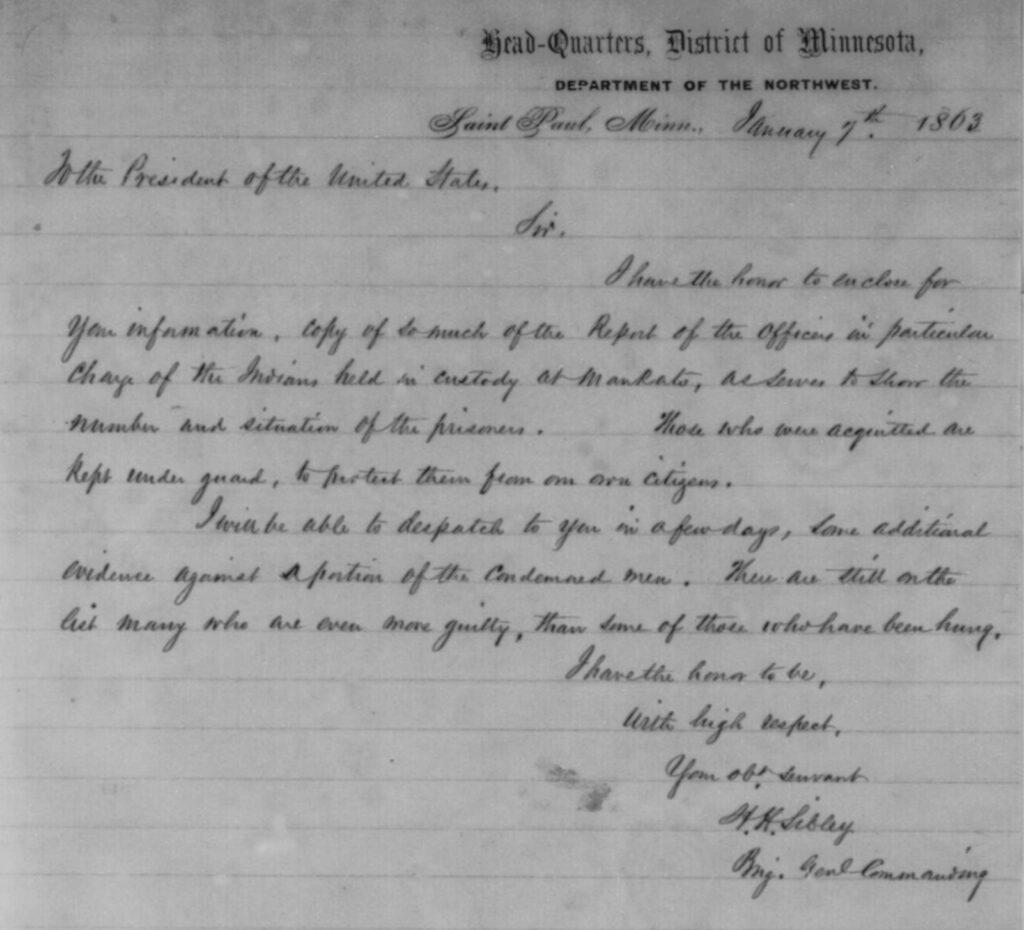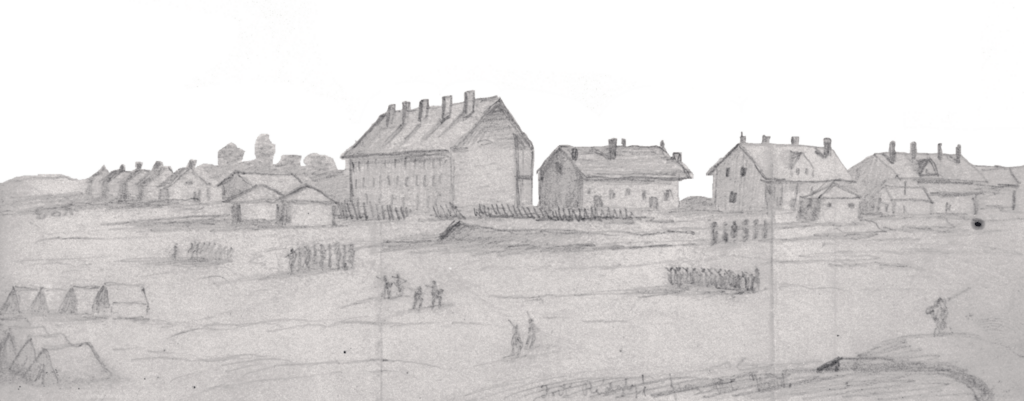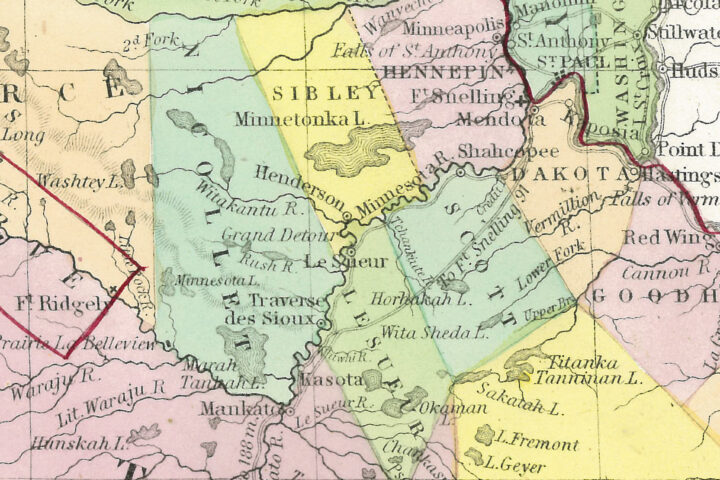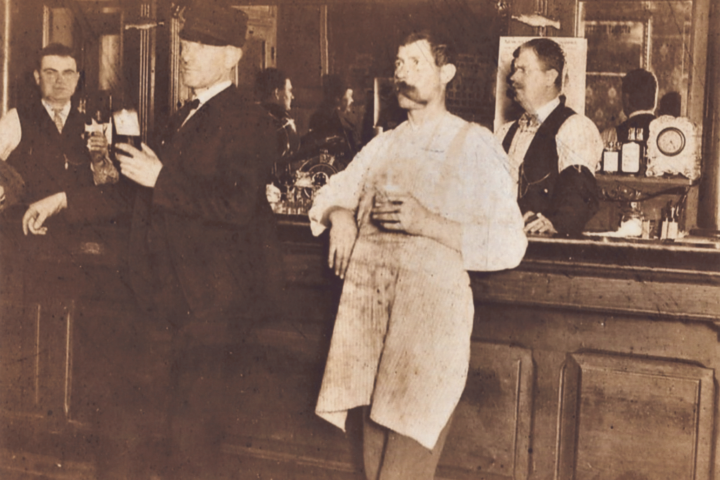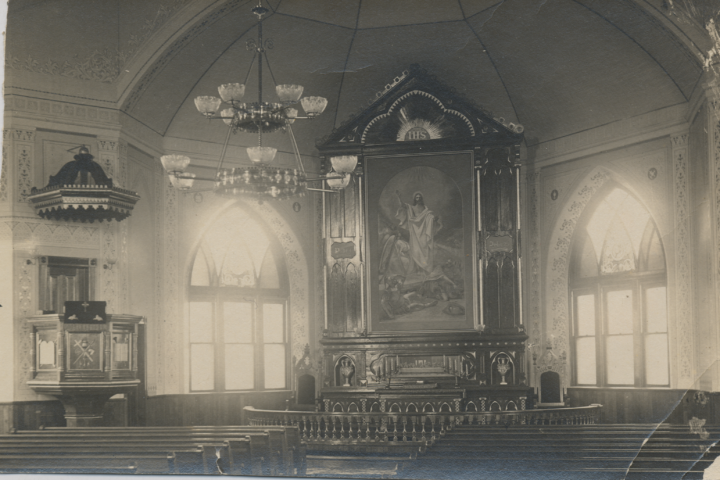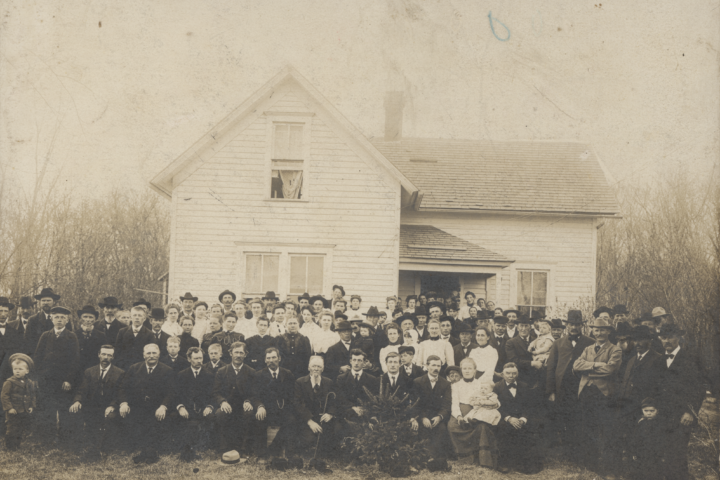Text excerpt from the Treaty of Traverse des Sioux permanent exhibit at the Nicollet County Historical Society-Treaty Site History Center.
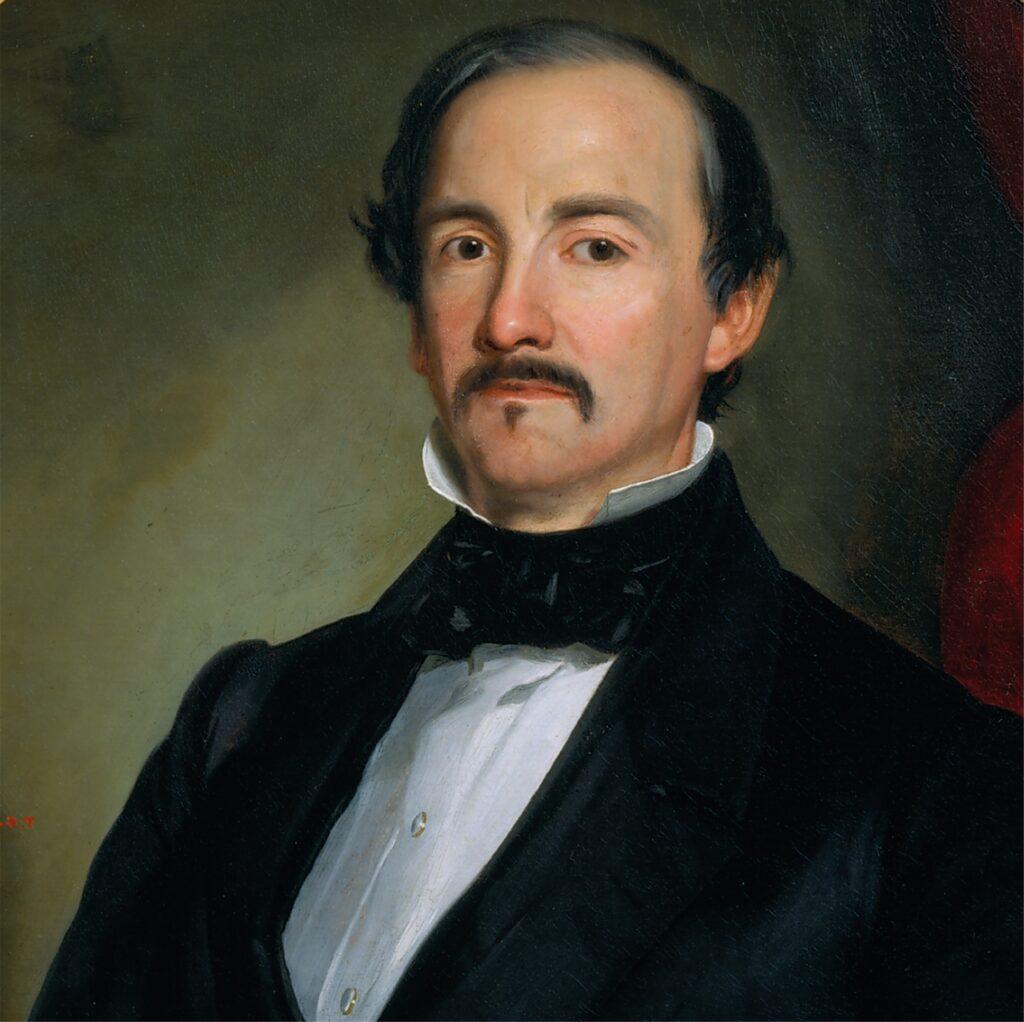
Henry Hastings Sibley was a man of many professions. Born in Detroit, Michigan on February 20, 1811, he first studied law in his father’s office. In 1829, the American Fur Company hired Sibley. By 1834 he’s a partner in the firm and placed in charge of the trade with the Dakota in Minnesota.
Sibley started his political career in 1838. His first position was an appointment as the first Justice of the Peace west of the Mississippi River. He was then elected to congress in 1848 representing the Territory of Wisconsin. Through opposition, he secured the passage of an act that organized the Territory of Minnesota on March 3, 1849. In 1855 he’s elected a member of the Minnesota Legislature from Dakota County. On May 11, 1858 Minnesota is admitted as the thirty-second state and Henry Sibley is elected the first state governor.
Writing a Treaty
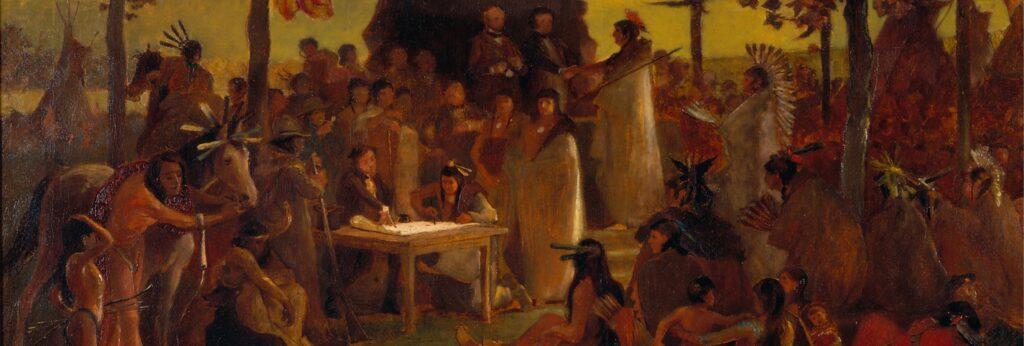
“The Indians are all prepared to make a treaty when we tell them to do so, and such an one as I may dictate. They were never been better disposed then now. I think I may safely promise you that no treaty can be made without our claims being first secured.”
Sibley in 1850 letter to fur trader, Pierre Chouteau, Jr.
Sibley had much influence among the Dakota and United States Government. So much that he became one of the principal architects of 1851 Treaty with the Dakota.
He headed a group of traders that was part of the official party of commissioners meeting the Sisseton and Wahpeton bands of Dakota at Traverse des Sioux. Sibley not only wanted to open Minnesota to immigration, but he also wanted traders’ debts paid. He even pushed to find a way around the 1843 act banning trader’s claims in treaties.
Territorial Governor Alexander Ramsey reminded Sibley trader’s debts could not be in the treaty. Sibley threatened, “…it would necessarily result in a failure of any attempt to treat.”
Sibley encouraged traders to be lenient with credit and to use kinship ties to gain support among the Dakota. He felt those debts would be paid from the Treaty. He used his kinship ties to assure mixed-bloods they would benefit from the Treaty by gaining land and money. In turn, they would persuade their Dakota relatives to sign the Treaty.
The 1862 U.S.-Dakota War
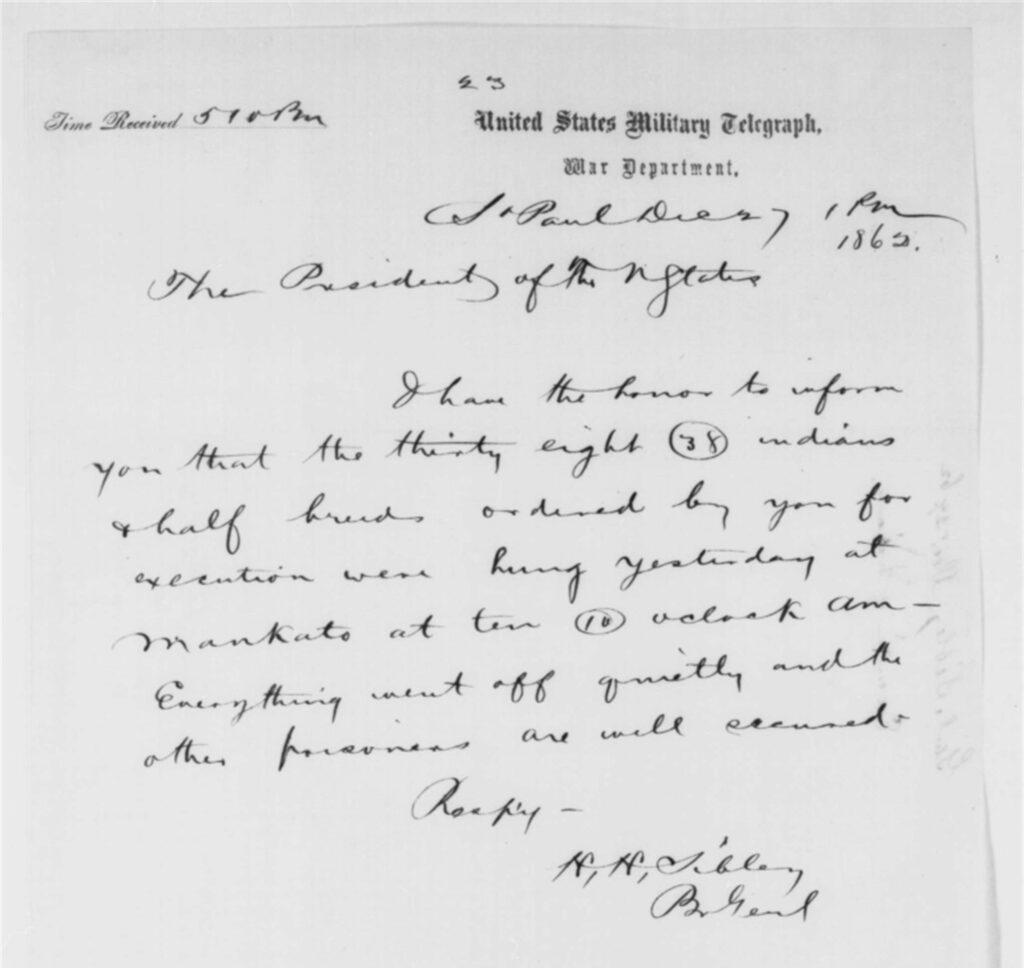
At the outbreak of the 1862 US Dakota War, Sibley was appointed colonel of the state militia to put down one of the most successful American Indian resistance movements in U.S. history. After the battle of Wood Lake on September 23, 1862 Sibley created a military commission to preside over criminal trials of Dakota accused of participation in the conflict. The five officer commission found 303 Dakota guilty and sentenced them to death.
President Lincoln reviewed the cases at the request of Dakota supporters like Bishop Henry Whipple, and commuted the sentences of 265 Dakota. Thirty-eight were hanged on Dec. 26, 1862 in Mankato. It remains the largest mass execution in U.S. history.
